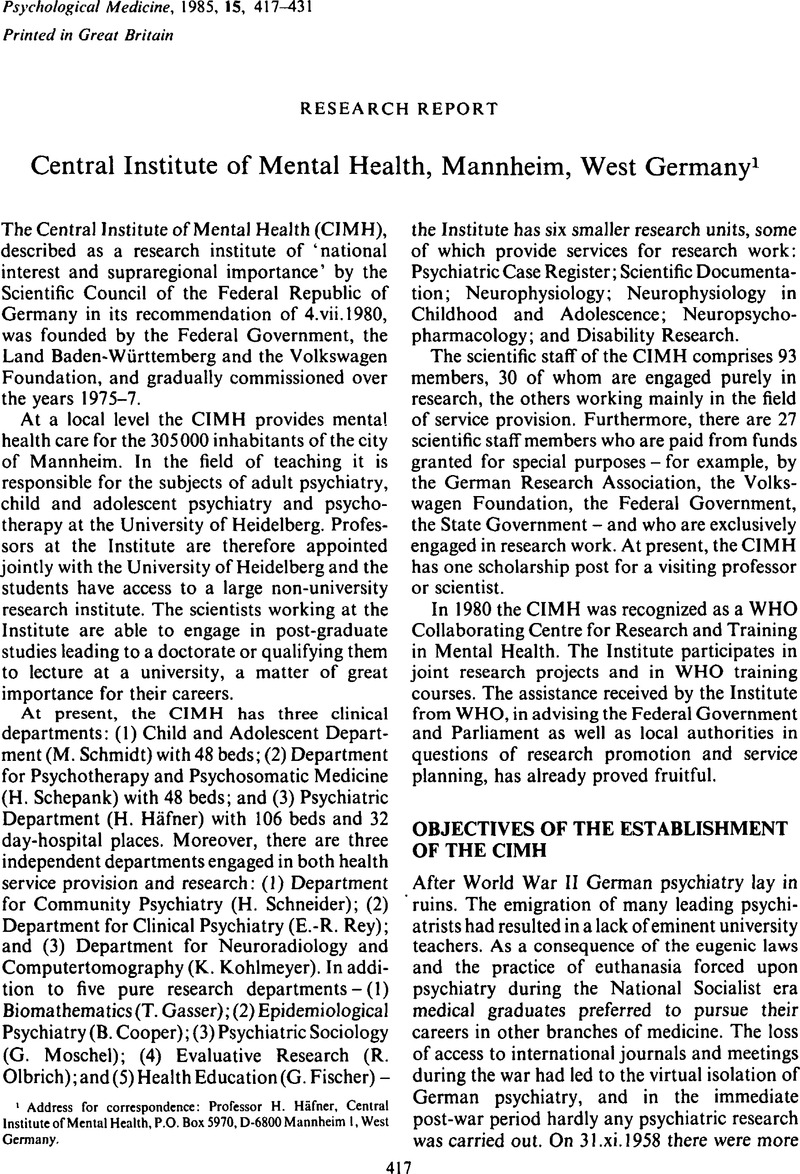Crossref Citations
This article has been cited by the following publications. This list is generated based on data provided by Crossref.
Helmchen, H.
1987.
Probleme und Perspektiven der Psychiatrischen Forschung in der Bundesrepublik Deutschland.
Psychiatry and Psychobiology,
Vol. 2,
Issue. 2,
p.
107.
Häfner, H.
1988.
Aktuelle Kernfragen in der Psychiatrie.
p.
39.
Svendsen, Susanne Wulff
and
Munk-Jørgensen, Povl
1993.
Psychiatry in Mannheim.
Nordic Journal of Psychiatry,
Vol. 47,
Issue. 3,
p.
217.



